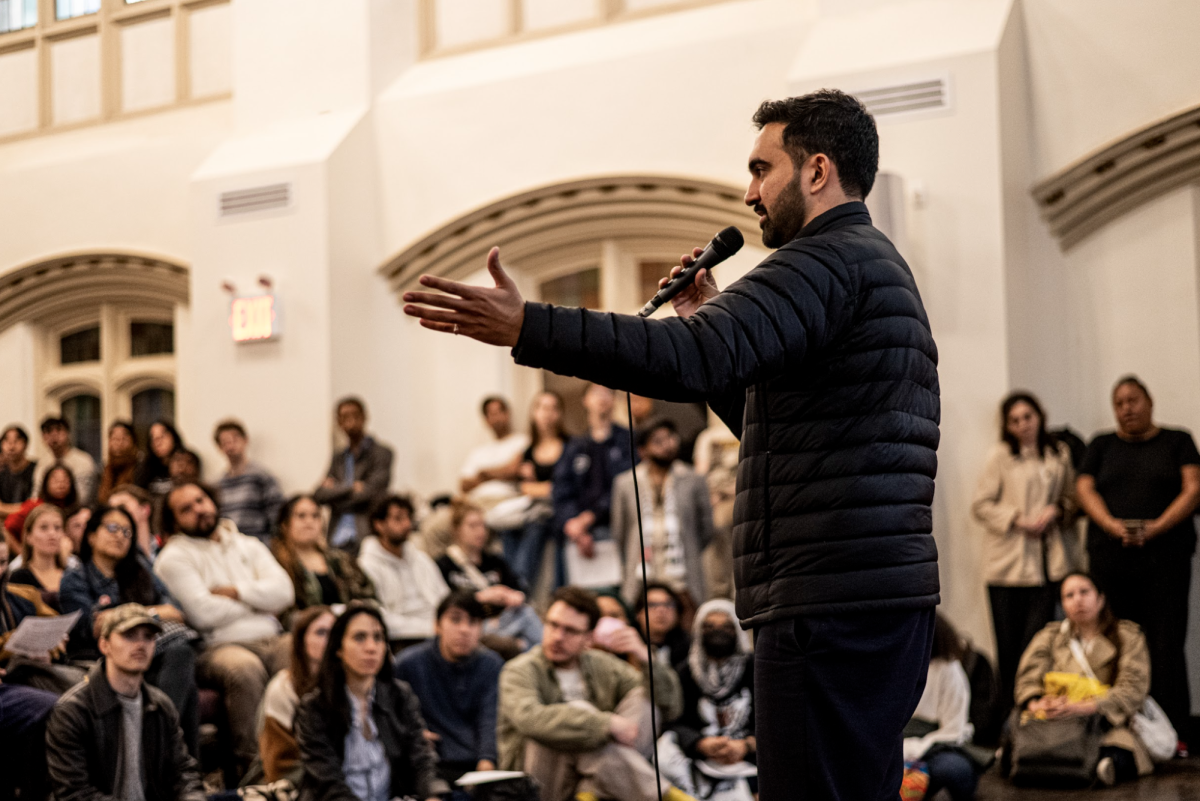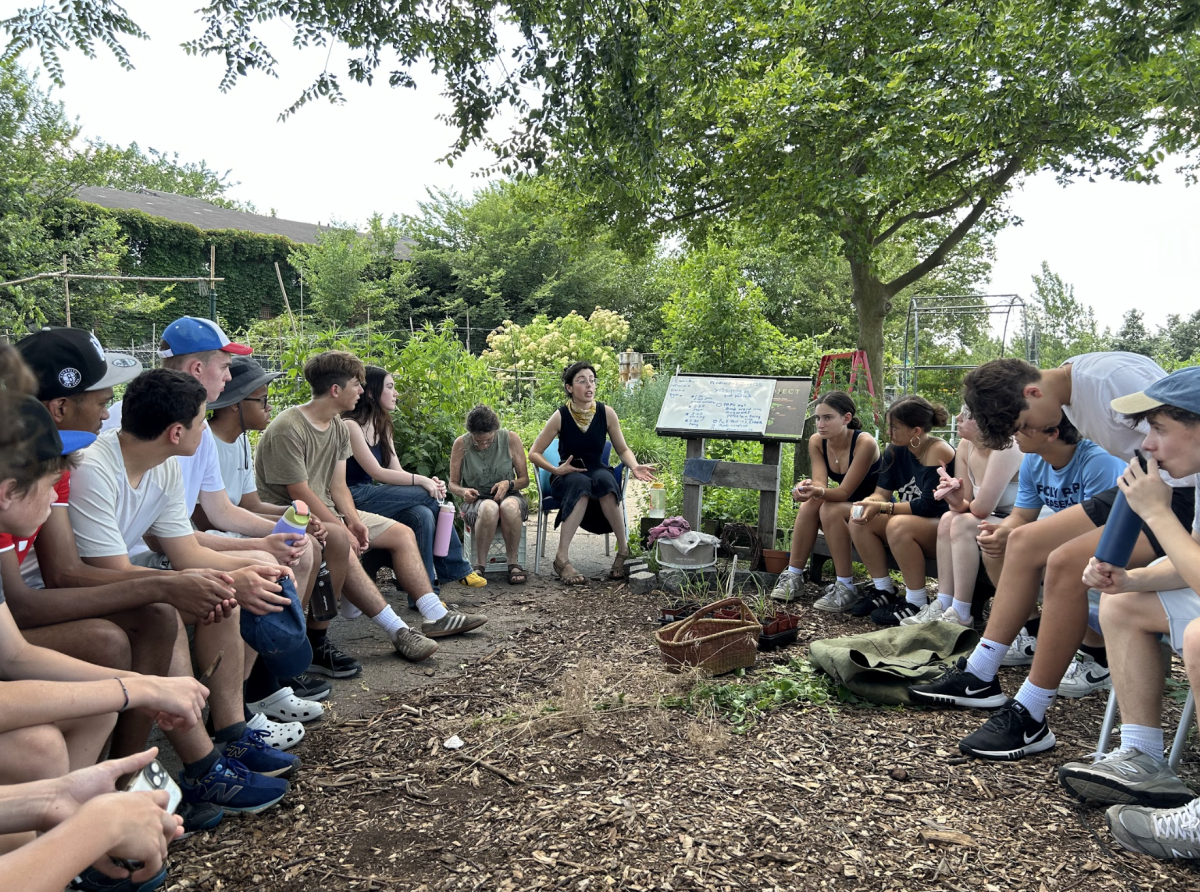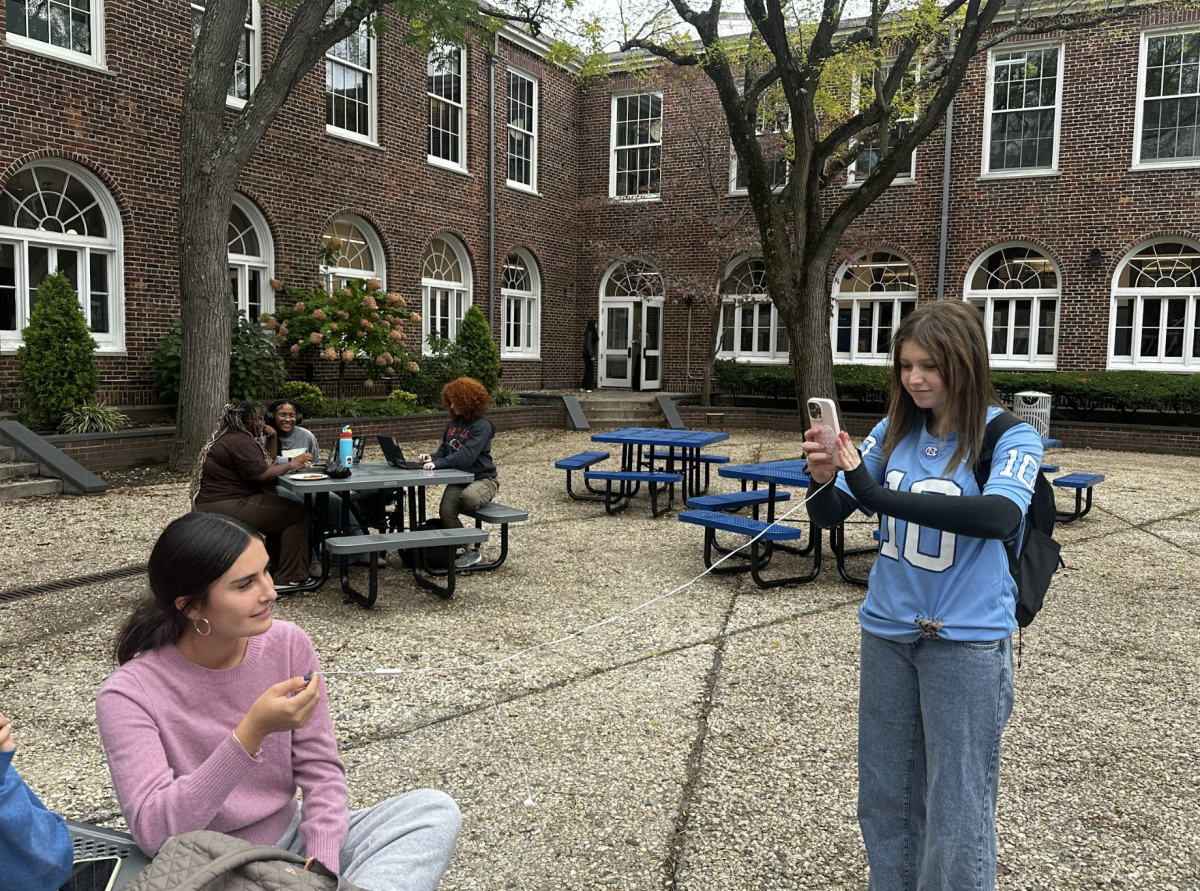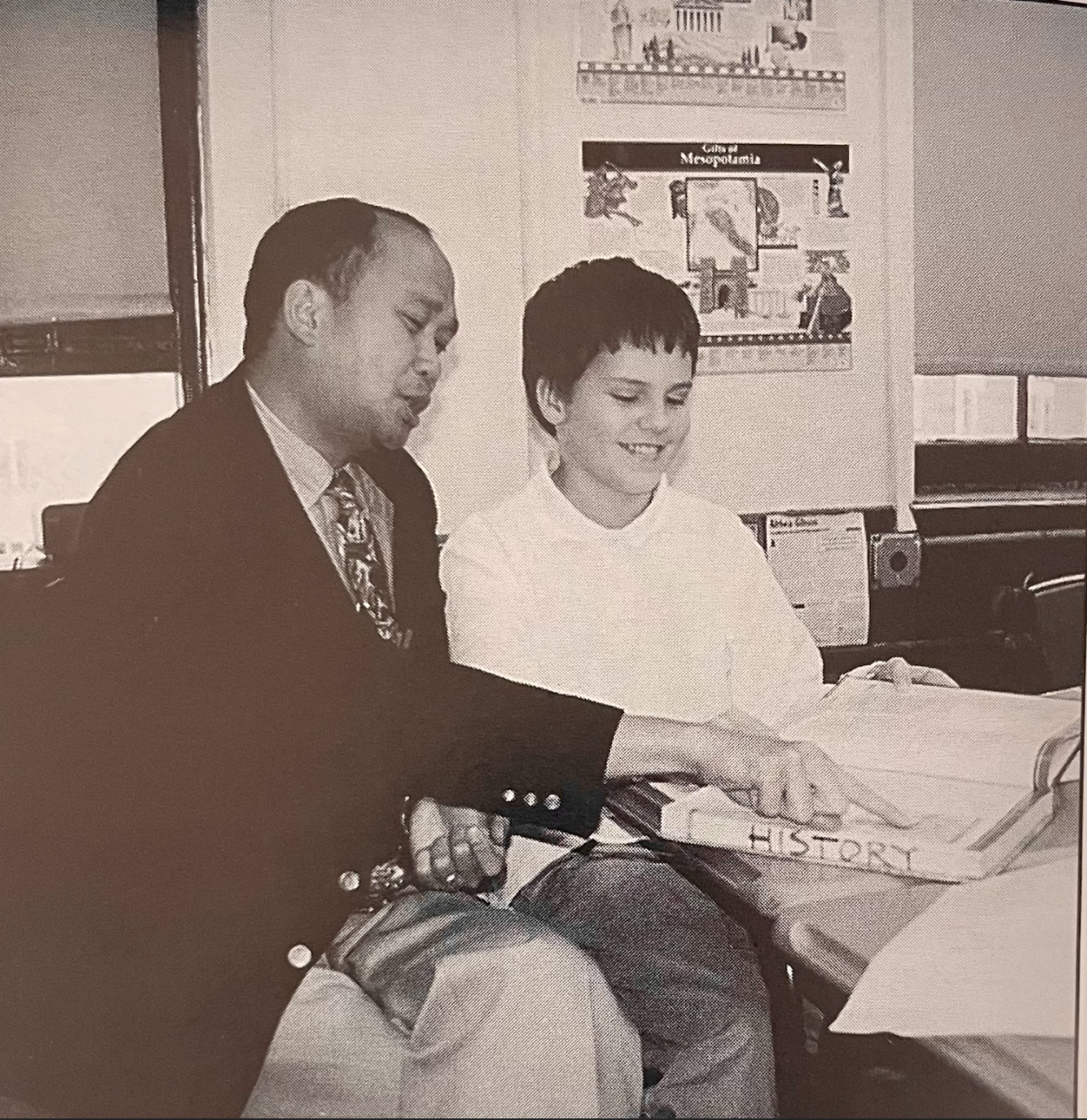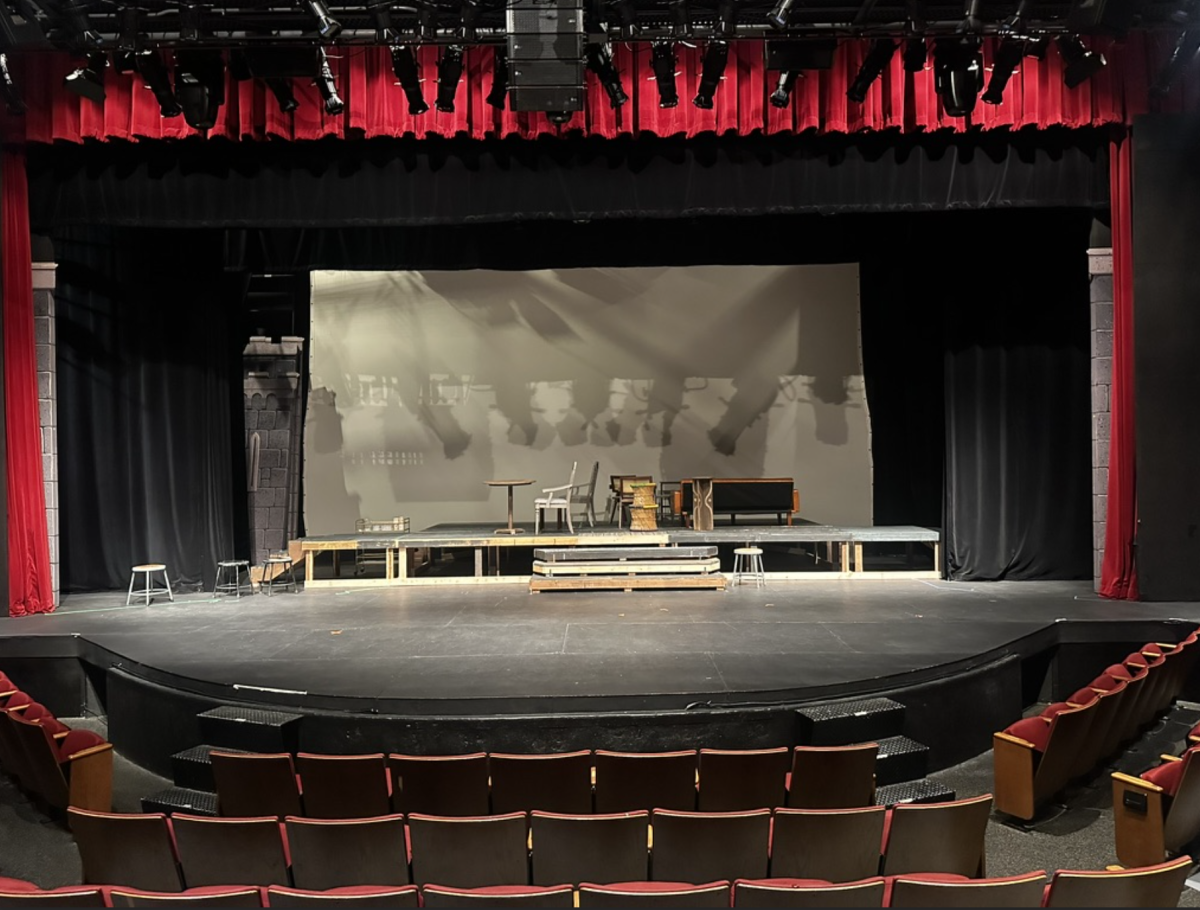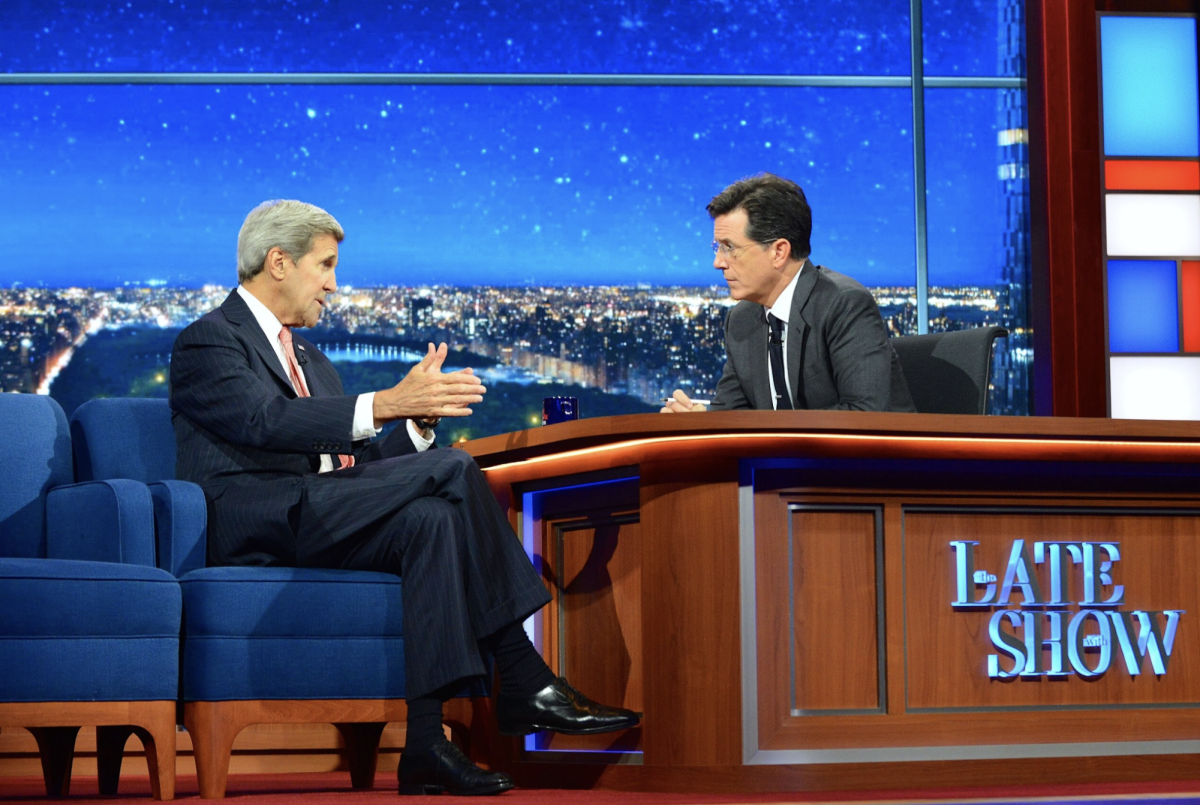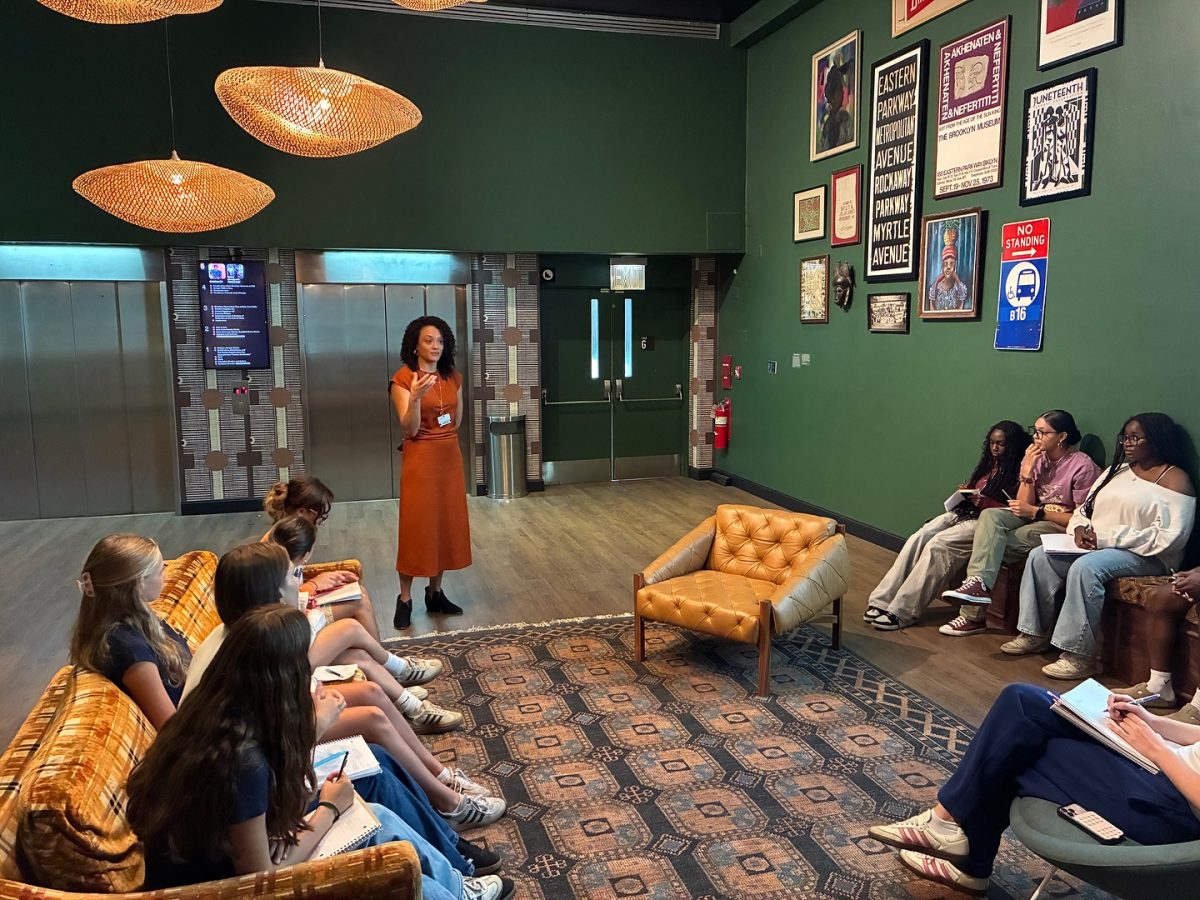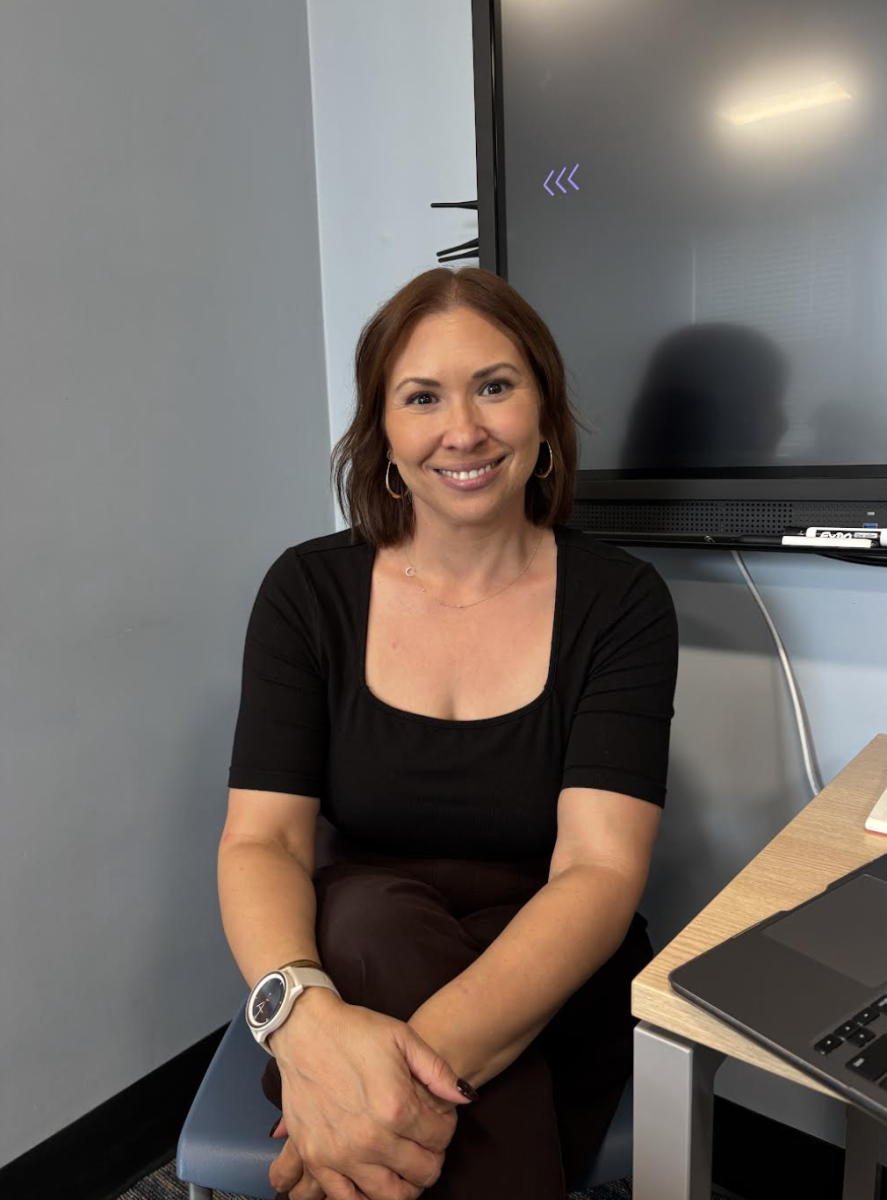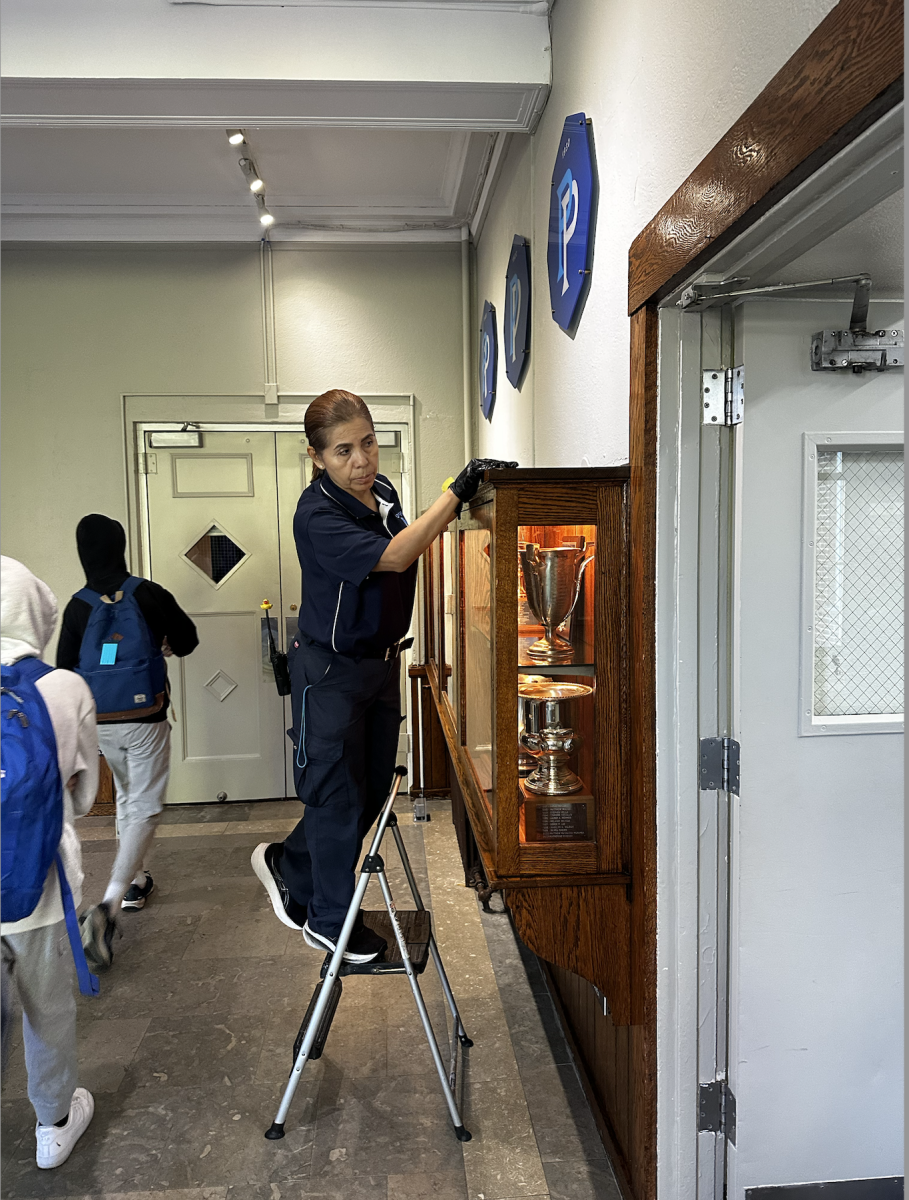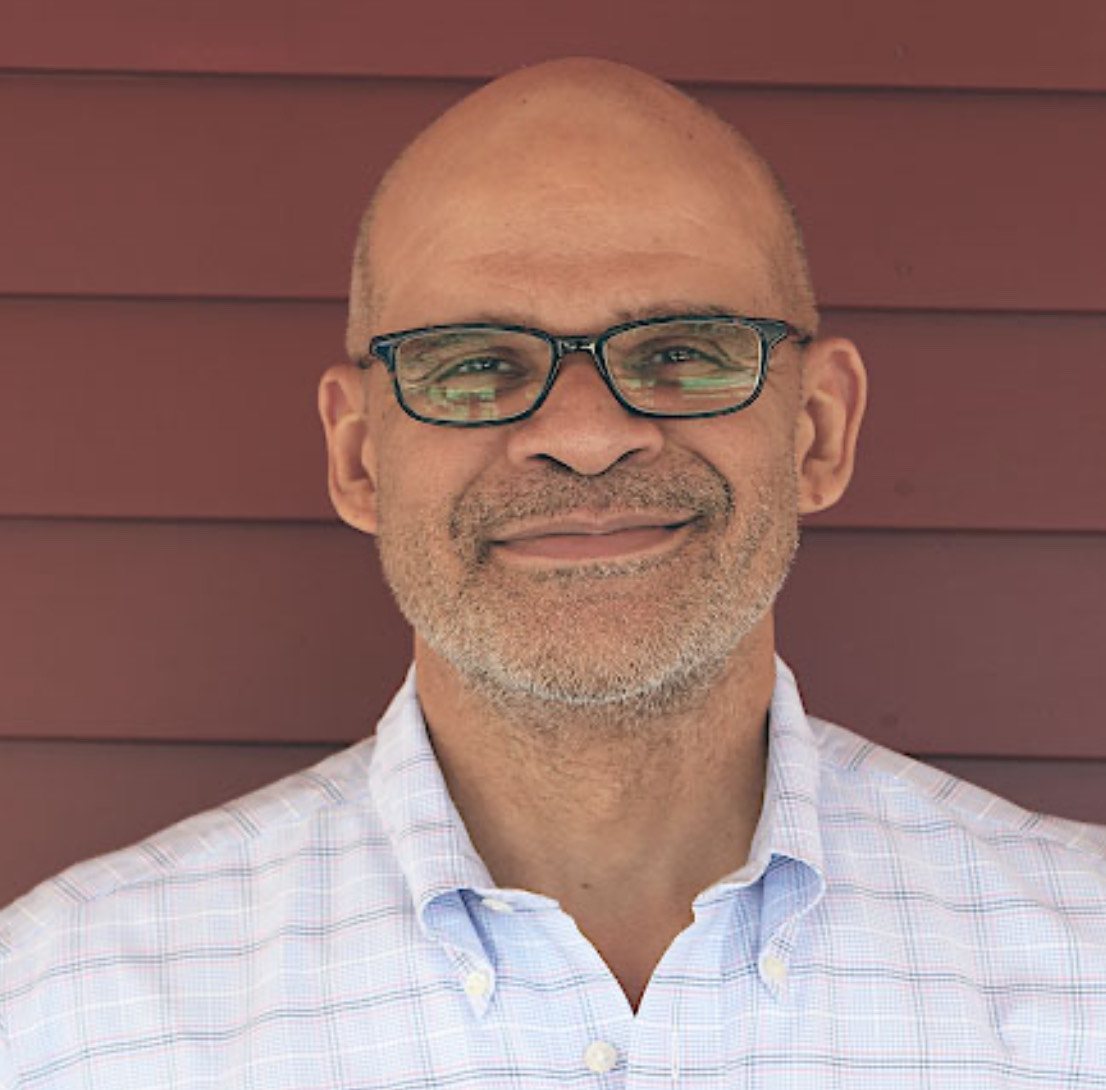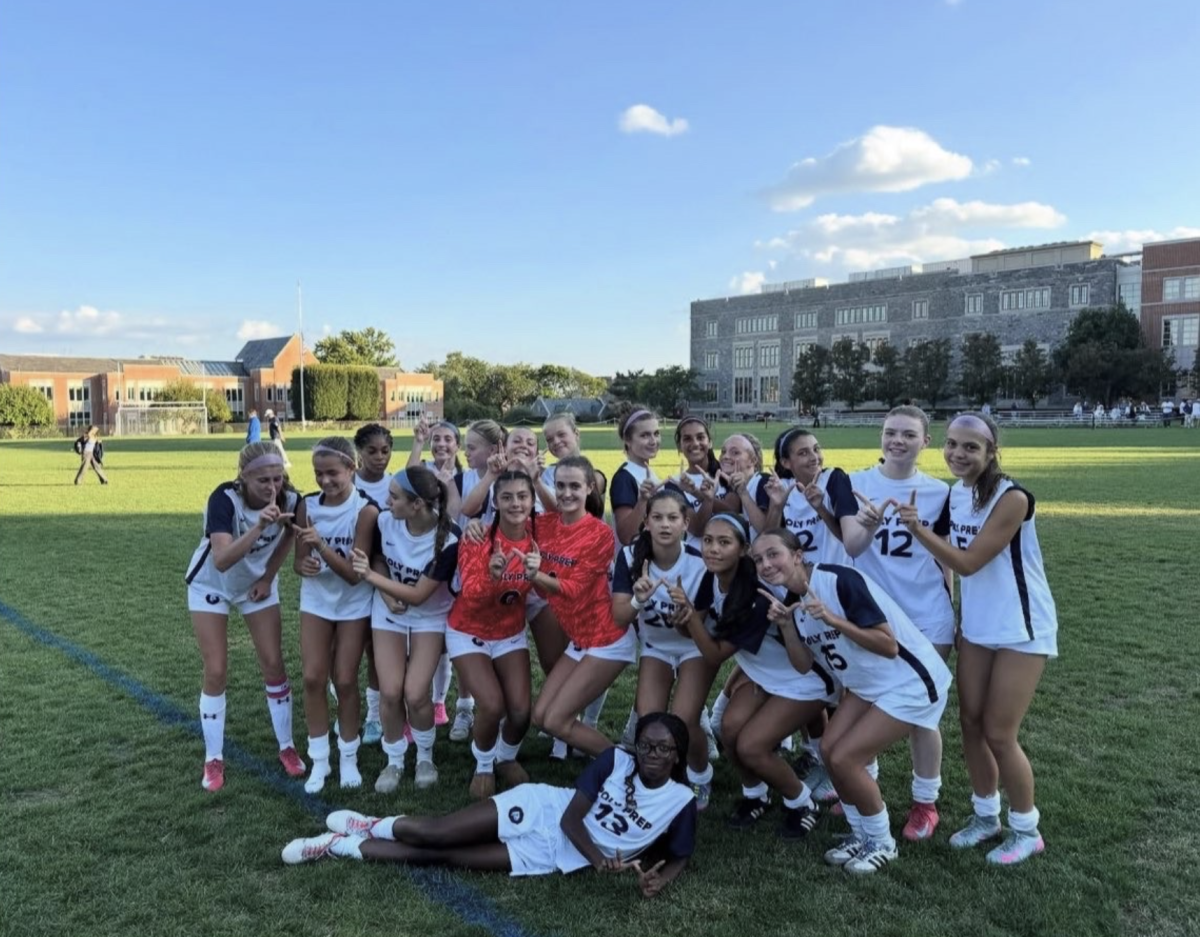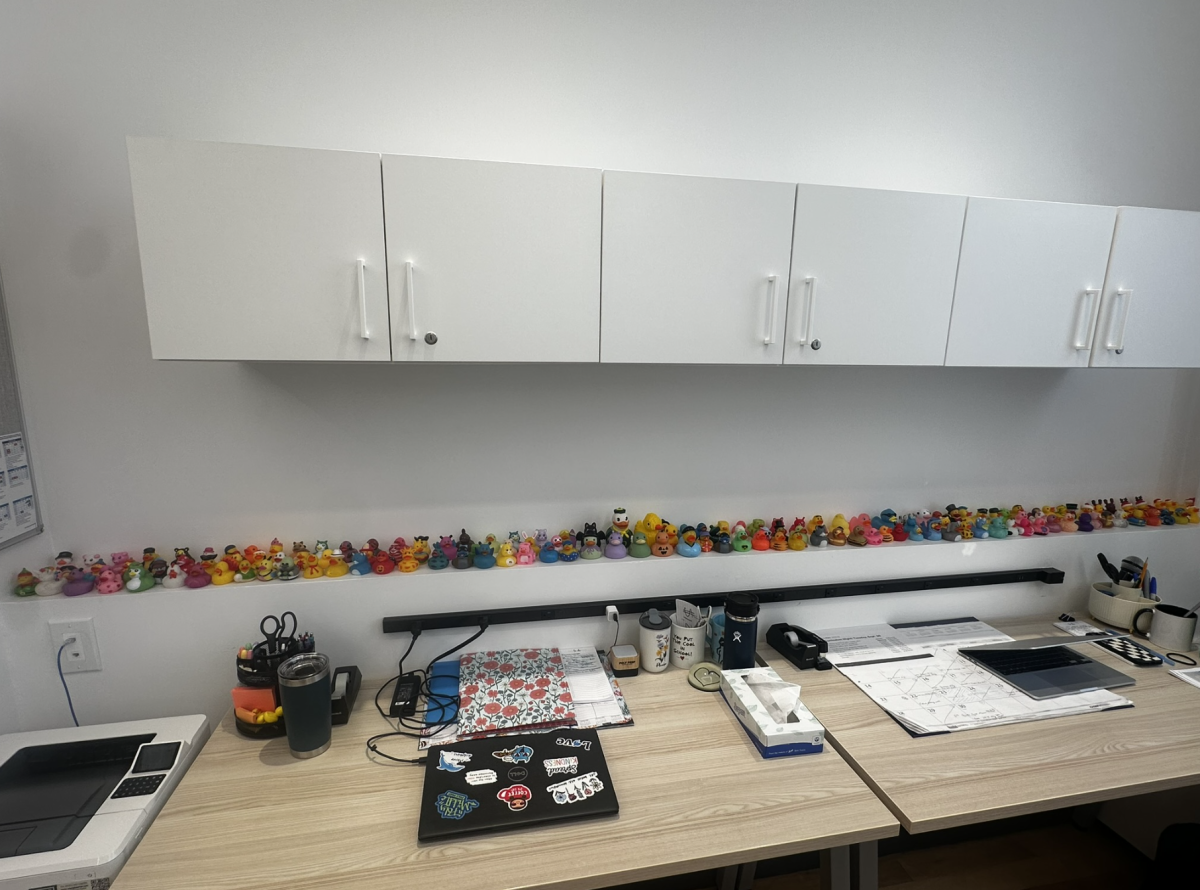The Poly History Club held its annual “History Club Presents” on April 24. During the 90-minute event, club members presented the projects they had spent the past year researching and creating. Five presentations were shared at the event, with topics ranging from Brown v. Board of Education to women’s fashion during World War II and the NYC subway system.
History Department Head Virginia Dillon has been ecstatic about the event. “These students. They’re truly amazing — just the best in terms of scholarship and what our school represents,” said Dillon. The students have met every club block the past year to work on these presentations with Dillon. “Much of it involves reading work, checking in, asking questions, making suggestions, and guiding them on sources.”
Presenting first was Junior Eason Yao. Yao’s presentation highlighted the impact of the Brown v. Board of Education decision on special education. By overturning the “Separate but Equal” doctrine, it mandated equal educational opportunities for all students, including those with disabilities. He supported his claim by mentioning the case of Mills v. Board of Education and how it exemplified how legal actions following Brown v. Board increased support and funding for special education. Today, according to Yao’s research, 64.8 percent of special education is integrated, showcasing the enduring influence of the Brown decision on educational inclusivity.
Following Yao was Sophomore Kaya Freeman, whose presentation discussed the transformative impact of Title IX on women’s athletics since its enactment in 1972. This law prohibits discrimination based on gender in athletic programs and activities. Freeman discussed that while this law significantly increased opportunities for women, it also presented challenges, such as its impact on male athletes who cannot use it to address their grievances. The Yale rowing team’s protest for equal treatment underlines ongoing struggles for equality, despite the law’s intent to level the playing field. Despite its imperfections and controversies, such as the NCAA’s noncompliance due to its private status and the notable disparity in facilities between the men’s and women’s Oregon University teams at the 2021 NCAA Basketball tournament, the overall benefits of Title IX are profound.
Next, Sophomore Nyla Harriot shared her presentation discussing the limitation order of 1942. During World War II, the Limitation Order restricted women’s fashion to conserve materials, which led women to adopt clothing styles that resembled men’s uniforms as they filled roles traditionally held by men in the workplace. Studying these fashion trends offers insights into the economic and social impacts of the war on everyday life.
Seniors William Ling-Regan and Marisa Triola created a documentary exploring the development of the NYC subway system. They shared that the subway system began in response to the increasing population density in the 19th century, leading to the need for rapid transit alternatives like steamboats, steam trains, and eventually, underground and elevated trains. The city adopted the Hewitt formula, which entailed public ownership of the subway lines with private operation, culminating in a public-financed construction of the subway that first opened in 1905 to facilitate interborough communication. Today, the subway serves as a vital transit network for over three billion New Yorkers annually, connecting diverse parts of the city and reflecting its dynamic growth.
Finally, Sophomore Eve Harris talked about Levittown, an area in Long Island. Levittown was conceived as an ideal “white suburbia,” explicitly excluding Black and Jewish families despite the Jewish heritage of its creators. The arrival of the Myers, a Black family, in Levittown triggered mass protests and widespread racism, highlighting the entrenched racial divisions within the community. Today, Harris explained, suburbs like Levittown have become less affordable, largely catering to wealthier white buyers, raising questions about the sustainability and inclusivity of suburban living in the present day.
The wide range of historic topics and their intrinsic connection to contemporary issues made this year’s “History Club Presents,” truly one to watch. Ling-Regan said he is sad about this marking the end of his time with the History Club and at Poly, but he added, “The History Club has been a tenet of my high school career, and I am so grateful for all I have received from it.”



